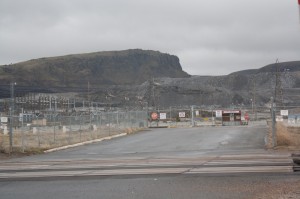“We have been suffering from various diseases for consuming water with fluoride content. We are desperately in need of pure drinking water.”-residents of Jagalur, India
Yet another study proves that fluoridated water makes you stupid, and can cause a life time of pain!
The latest study was conducted in India, and just published in the Journal of Medical and Allied Sciences.
Rats were used, and the results were neurodegenerative and morphological alterations in the neocortex, hippocampus and cerebellum areas of the brain, and in the spinal cord and sciatic nerve.
Neurodegenerative is the progressive loss of neurons, and “morphological alterations” basically means physical mutations.
Researchers say the negative affects with intelligence and pain take place before physical mutations appear: “High levels of fluoride in drinking water (1-12 parts per million) affect central nervous system directly without first causing the physical deformities of skeletal fluorosis.”-K. Pratap Reddy, Osmania University, Hyderabad, India
This is not the first study to say fluoride is bad for you. Over the decades dozens and dozens of studies across the world have resulted in the same conclusion. According to the Fluoride Action Network (FAN), there are now 25 studies showing that fluoride makes you stupid.
Studies have also shown a link between arthritis pain, back pain, joint and muscle pains. The research in India was motivated after people in a village named Jagalur, were found to be suffering from all kinds of diseases and chronic conditions. Investigations blamed the fluoridated water.
It’s not just Jagalur. Joint pains, teeth problems, muscular pains, stomach pain and headaches are common among people in Gollaratti, Rajnatti, Gidnatti, Bullolli, Machikere, Marajanmatti, Kechhanahalli, Devikere, Chadaragolla, Gowripura, Kyasanahalli and many other villages who’s water has fluoride in it.
However, the problem in India comes from naturally occurring fluoride in their well water. Here in the United States local and state governments purposely add fluoride to the water.
It turns out that currently, only the English speaking countries add fluoride to public drinking water. In the book The Fluoride Deception, author Christopher Bryson revealed how the push for fluoride use in the U.S. is directly related to the U.S. nuclear program and the pharmaceutical industry.
It turns out there have been many anti-fluoride lawsuits against local municipalities in the United States, however most have not been successful.
Now lets see, English speaking countries are the only ones that intentionally add fluoride to the drinking water, and there’s been a huge increase in chronic pain, and the use of pain killers, among the people of those English speaking countries. Also, there’s been a huge decrease in the overall level of intelligence, no matter how much taxpayer money has been thrown at education programs. And, have you also noticed that the political, business, social and religious leaders of those English speaking countries seem to be making decisions that are more and more irrational? Mmmm, could it be something in the water?
